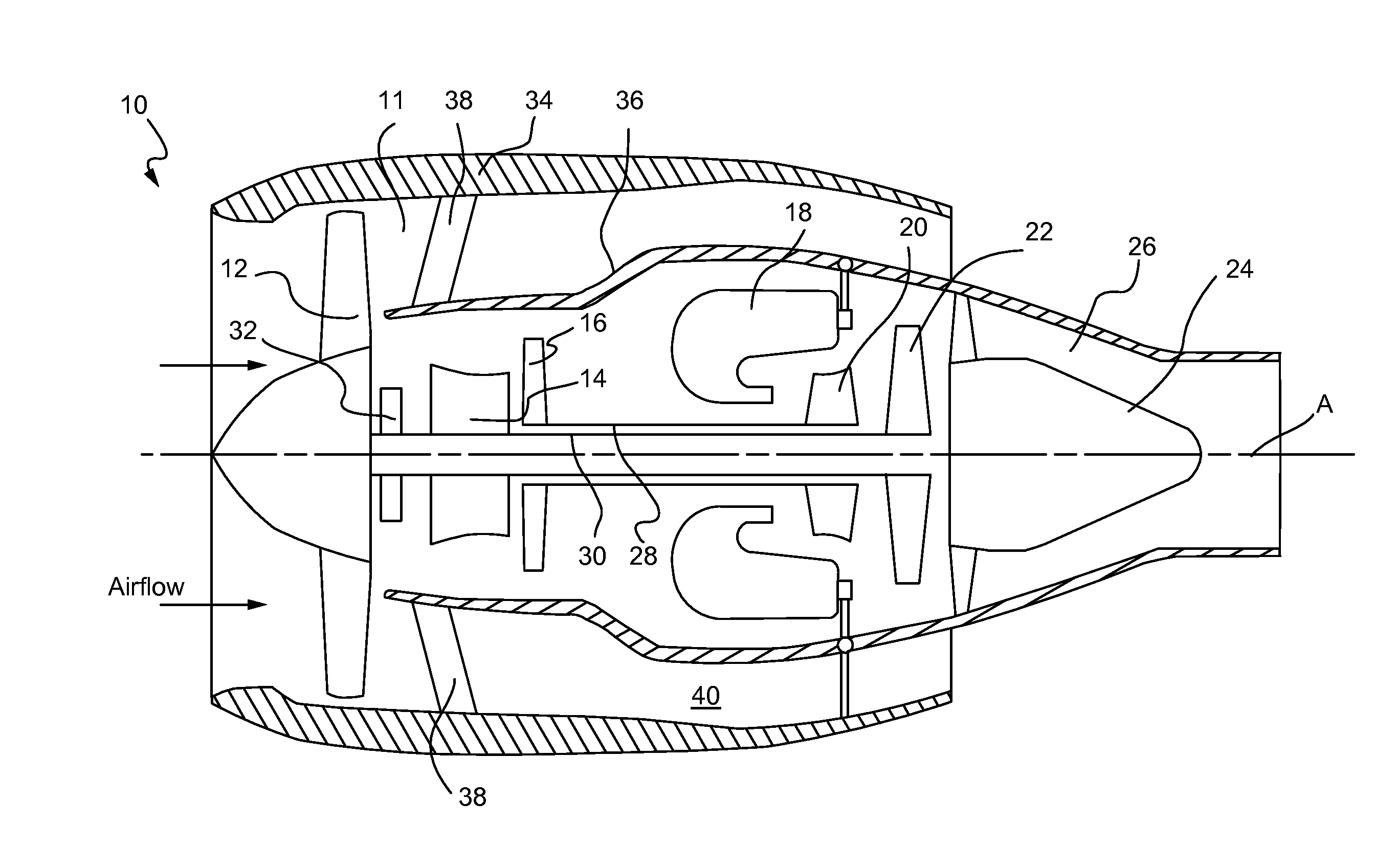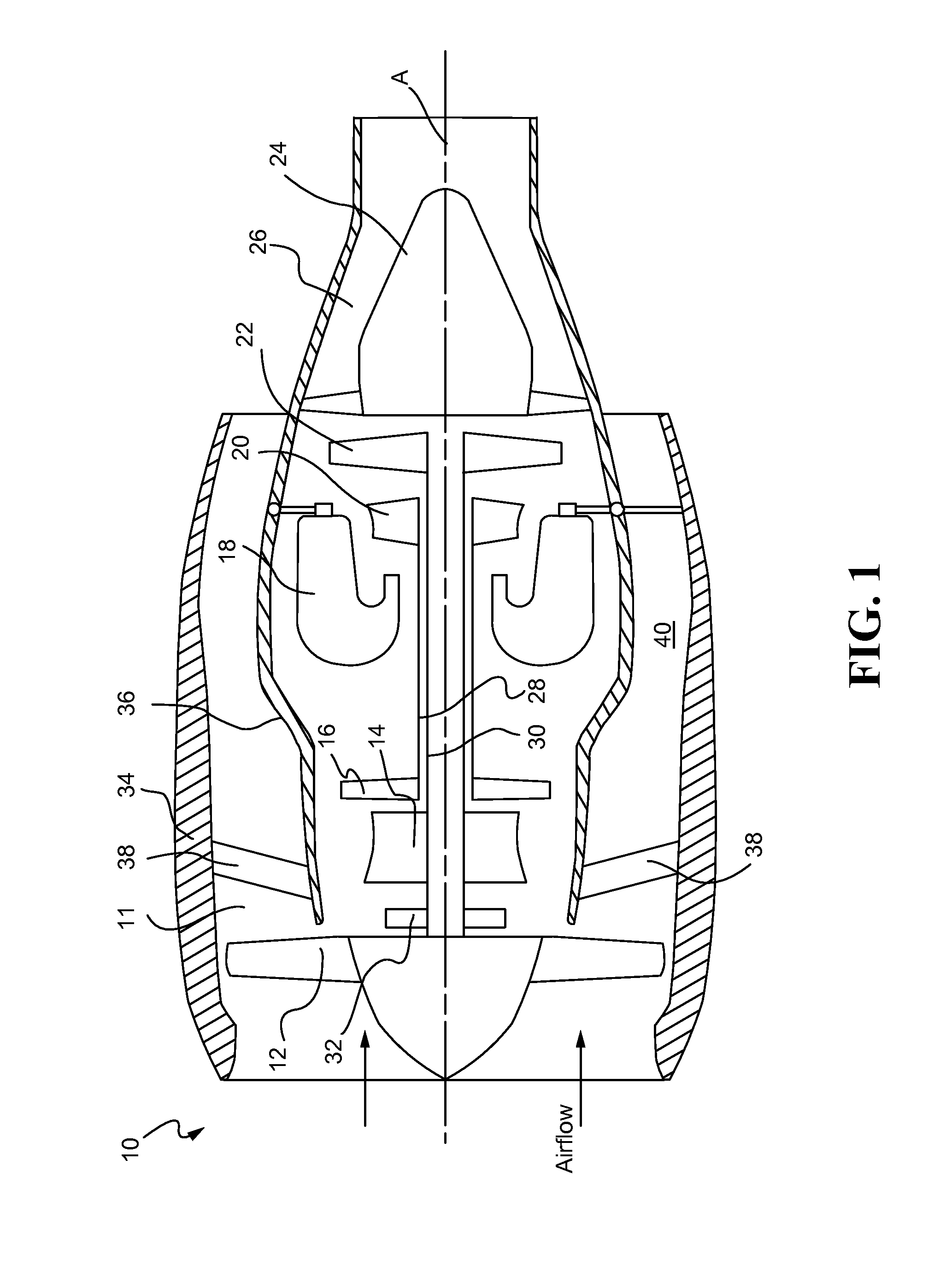Closure of Cooling Holes with a Filing Agent
a filing agent and cooling hole technology, applied in the field of gas turbine engines, can solve the problems of increasing the cooling air flow on the component, affecting the performance of the gas turbine engine, and often needing to remove old tbc, etc., and achieve the effect of not deteriorating the gas turbine engin
- Summary
- Abstract
- Description
- Claims
- Application Information
AI Technical Summary
Benefits of technology
Problems solved by technology
Method used
Image
Examples
Embodiment Construction
[0040]Referring now to the drawings, and with specific reference to FIG. 1, there is depicted an exemplary gas turbine 10 wherein various embodiments of the present disclosure may be utilized. In this example, the industrial gas turbine 10 may include a compressor section 11 which may comprise, sequentially from the forefront of the gas turbine engine 10, a fan 12, a low pressure compressor 14, a high pressure compressor 16, a combustor chamber 18 downstream of the compressor section 11, a high pressure turbine 20 and a low pressure turbine 22 both downstream of the combustor chamber 18, a tail cone 24, and an exhaust nozzle 26. Further, a high pressure shaft 28 may couple the high pressure compressor 16 with the high pressure turbine 20, while a low pressure shaft 30 may couple the low pressure compressor 14 with the low pressure turbine 22. Both shafts 28 and 30 may be rotatable about an axis A. The low pressure shaft 30 may drive the fan 12 through a gear train 32. On the outside...
PUM
| Property | Measurement | Unit |
|---|---|---|
| temperature | aaaaa | aaaaa |
| diameter | aaaaa | aaaaa |
| diameter | aaaaa | aaaaa |
Abstract
Description
Claims
Application Information
 Login to View More
Login to View More - R&D
- Intellectual Property
- Life Sciences
- Materials
- Tech Scout
- Unparalleled Data Quality
- Higher Quality Content
- 60% Fewer Hallucinations
Browse by: Latest US Patents, China's latest patents, Technical Efficacy Thesaurus, Application Domain, Technology Topic, Popular Technical Reports.
© 2025 PatSnap. All rights reserved.Legal|Privacy policy|Modern Slavery Act Transparency Statement|Sitemap|About US| Contact US: help@patsnap.com



